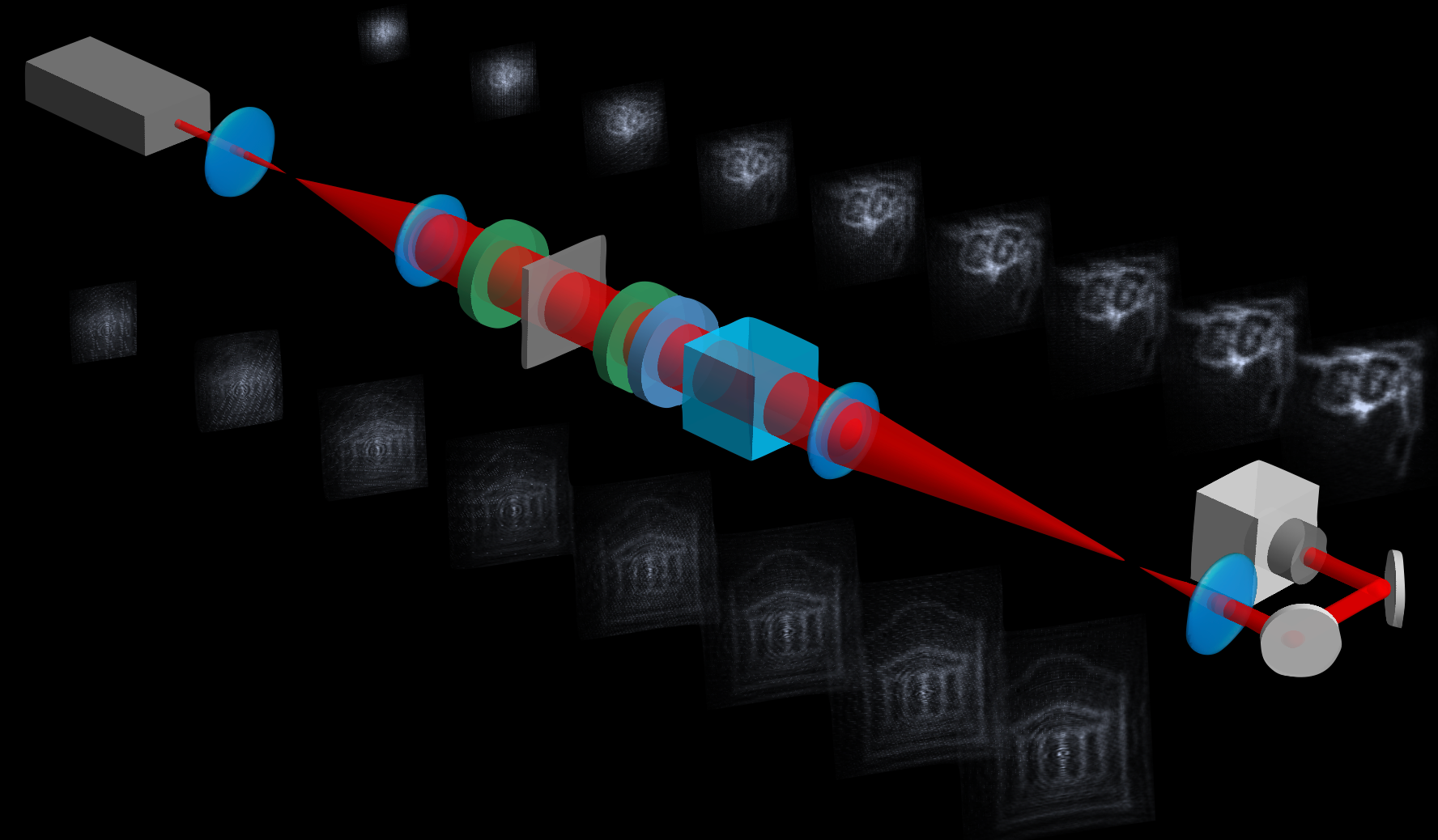Researchers have employed liquid crystals for the first time to develop a flat magic window, which is a transparent device that generates a concealed picture when light shines on it. The technology offers a fresh take on an age-old light trick.
 Researchers have used liquid crystals to create magic windows that produce a hidden image when light shines on it. Image Credit: Felix Hufnagel, University of Ottawa.
Researchers have used liquid crystals to create magic windows that produce a hidden image when light shines on it. Image Credit: Felix Hufnagel, University of Ottawa.
Bronze mirrors, created in China and Japan thousands of years ago, looked like a normal flat mirror while looking at one’s reflection but formed an additional image when hit by direct sunlight.
It took scientists until the early 20th century to realize that these devices work because an image cast into the back of the mirror creates small surface variations that cause the image to form, and engineers applied the same principle recently to liquid crystals for high-tech displays.
The magic window we created appears perfectly flat to the naked eye but, in fact, has slight variations that create an image in response to light. By designing the window to be relatively smooth, the image that is created can be seen over a large range of distances from the window.
Felix Hufnagel, Research Team Leader, University of Ottawa
Hufnagel and colleagues explain the technology they created for making translucent liquid crystal magic windows that can produce any desired picture in Optica, the Optica Publishing Group’s journal for high-impact research. The method can also be used to make magic mirrors that generate an image by reflecting rather than transmitting light.
Hufnagel added, “Using liquid crystals to make magic windows or mirrors could one day make it possible to create a reconfigurable version for producing dynamic artistic magic windows or movies. The ability to obtain a long depth of focus could also make the approach useful for 3D displays that produce stable 3D images even when viewed from different distances.”
Creating magic with liquid crystals
Despite scientists knowing for decades that slight surface differences in ancient bronze magic mirrors formed pictures, it was not until 2005 when Michael Berry, a mathematical physicist at the University of Bristol in the United Kingdom, developed the mathematical foundation for this phenomenon.
He used this information to create a theoretical foundation for transparent magic windows and reflecting magic mirrors. His study led Hufnagel and colleagues to develop a liquid crystal-based magic window.
Liquid crystals are materials that flow like a liquid yet can be orientated like a solid crystal. The researchers utilized a modified version of a well-known manufacturing procedure in their new work to construct a specific liquid crystal pattern that creates a desired picture when lighted.
They employed a Pancharatnam-Berry Optical Element (PBOE), a liquid crystal device that works on the well-known principle, Pancharatnam-Berry phase. The researchers were able to change the characteristics of light as it traveled through the device on a pixel-by-pixel basis by altering the orientation of liquid crystal molecules in this device.
Stable images over multiple distances
“On a conceptual level, the theory developed by Berry was instrumental in determining how these liquid crystals must be oriented to create an image that is stable over a large distance. Our use of flat optical elements and a liquid crystal pattern with gentle variations prescribed by Berry’s Laplacian image theory allows the magic windows to appear normal, or flat, when one looks through them”, Hufnagel stated.
The researchers utilized a camera to assess the light intensity patterns created by both devices after building a magic mirror and window. The mirror and the window created a visible picture when lit with a laser beam that remained steady when the distance between the camera and the mirror or window changed.
The researchers also demonstrated that when the devices were lit with an LED light source, they produced pictures, which would be more practical in real-world applications.
The researchers are now attempting to construct quantum magic plates using their production method. Two of these plates, for example, could produce entangled pictures to research emerging quantum imaging procedures.
They are also looking at the prospect of making magic windows without using liquid crystals. For instance, constructing a magic window device with dielectric metasurfaces might minimize its footprint while enhancing bandwidth.
Journal Reference:
Hufnagel F., et al., (2022) Flat magic window. Optica. doi.org/10.1364/OPTICA.454293.